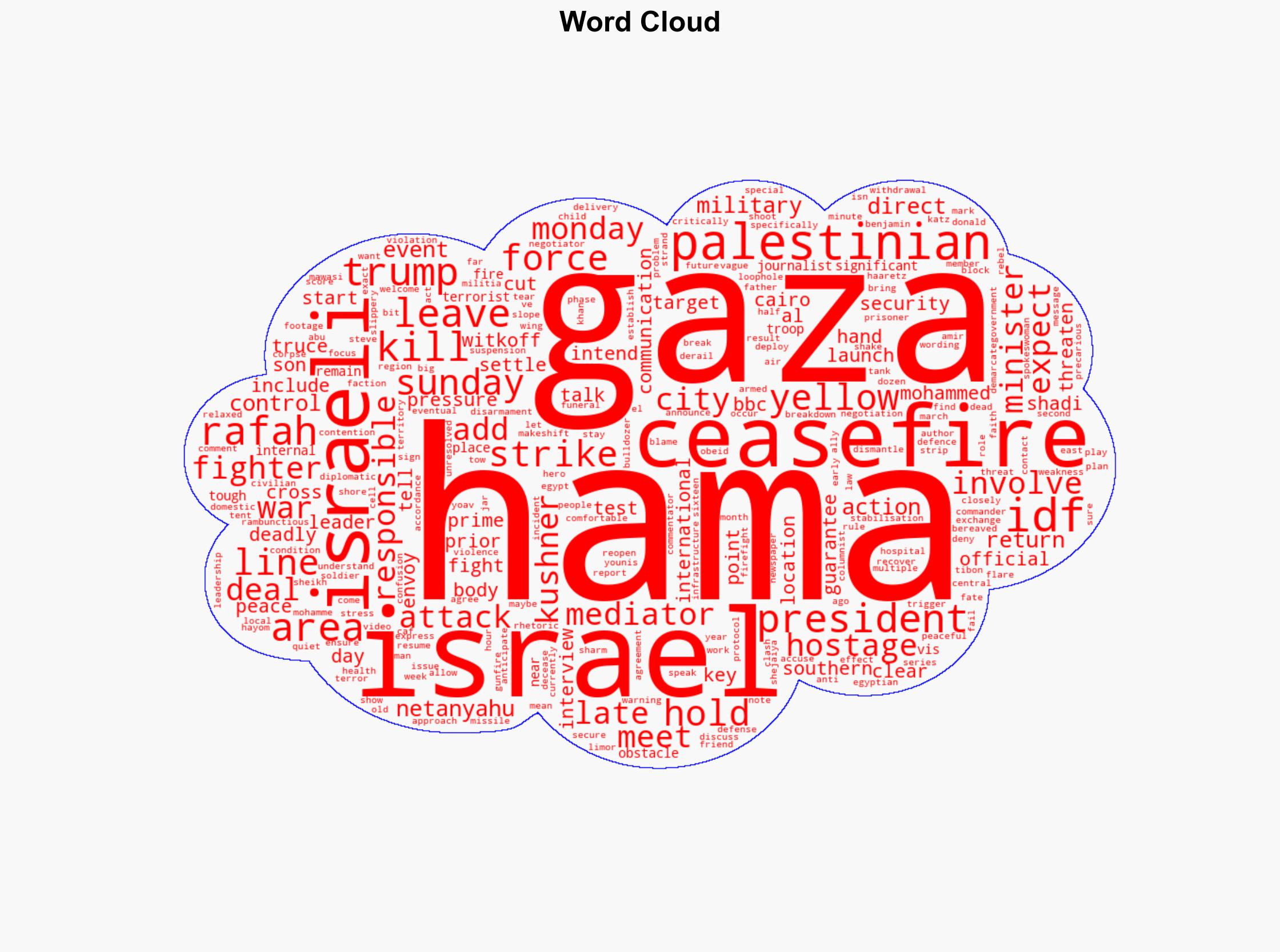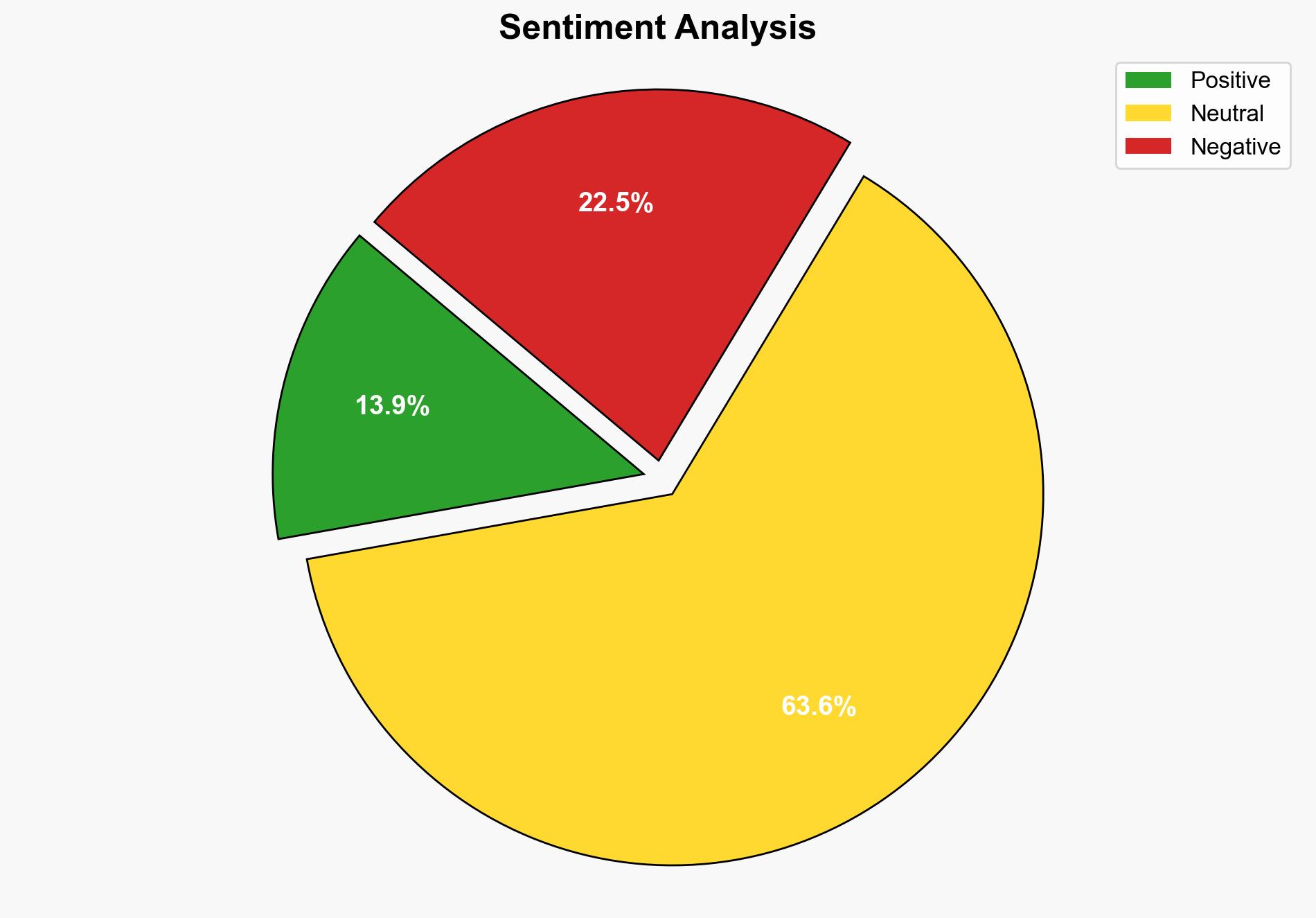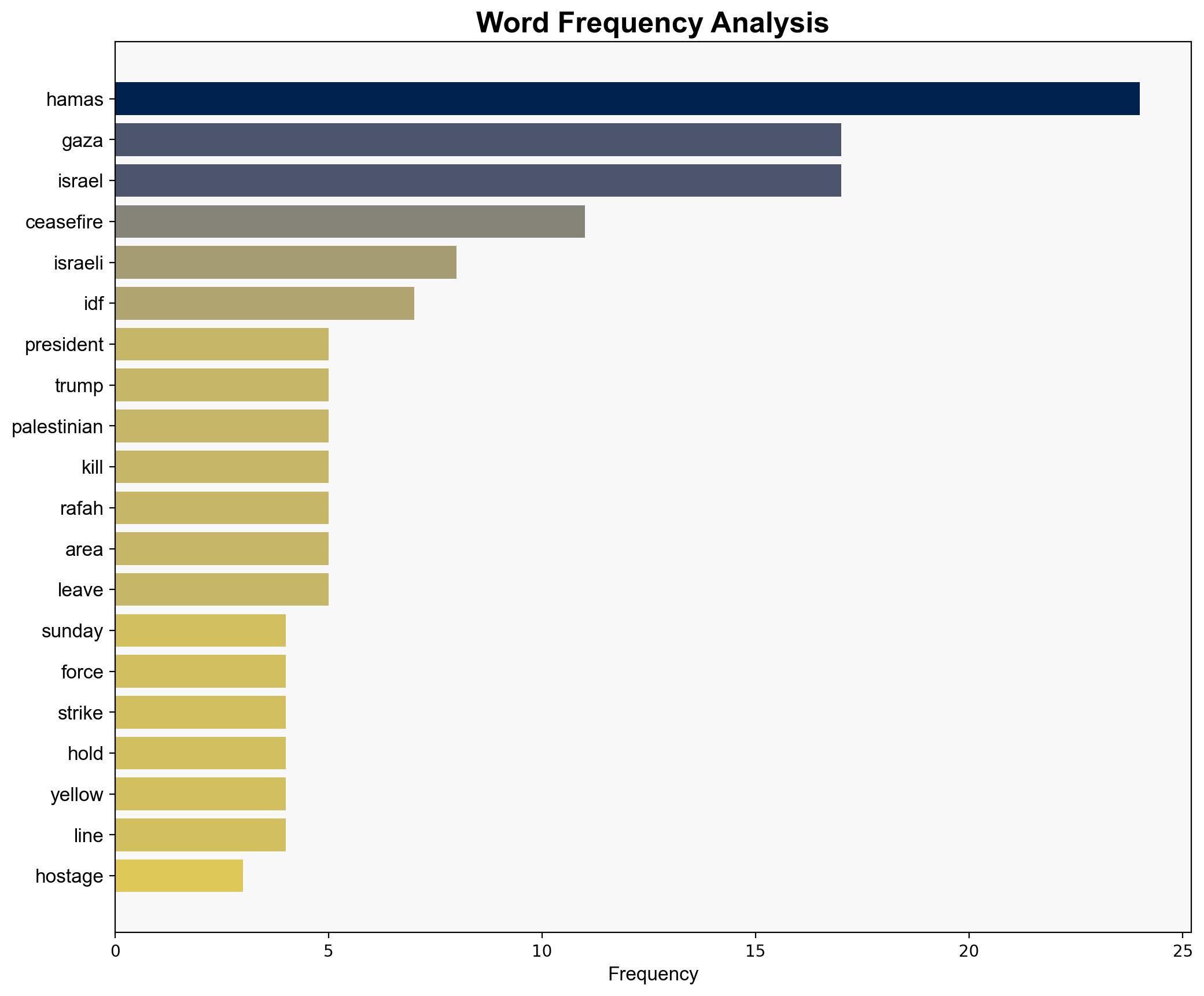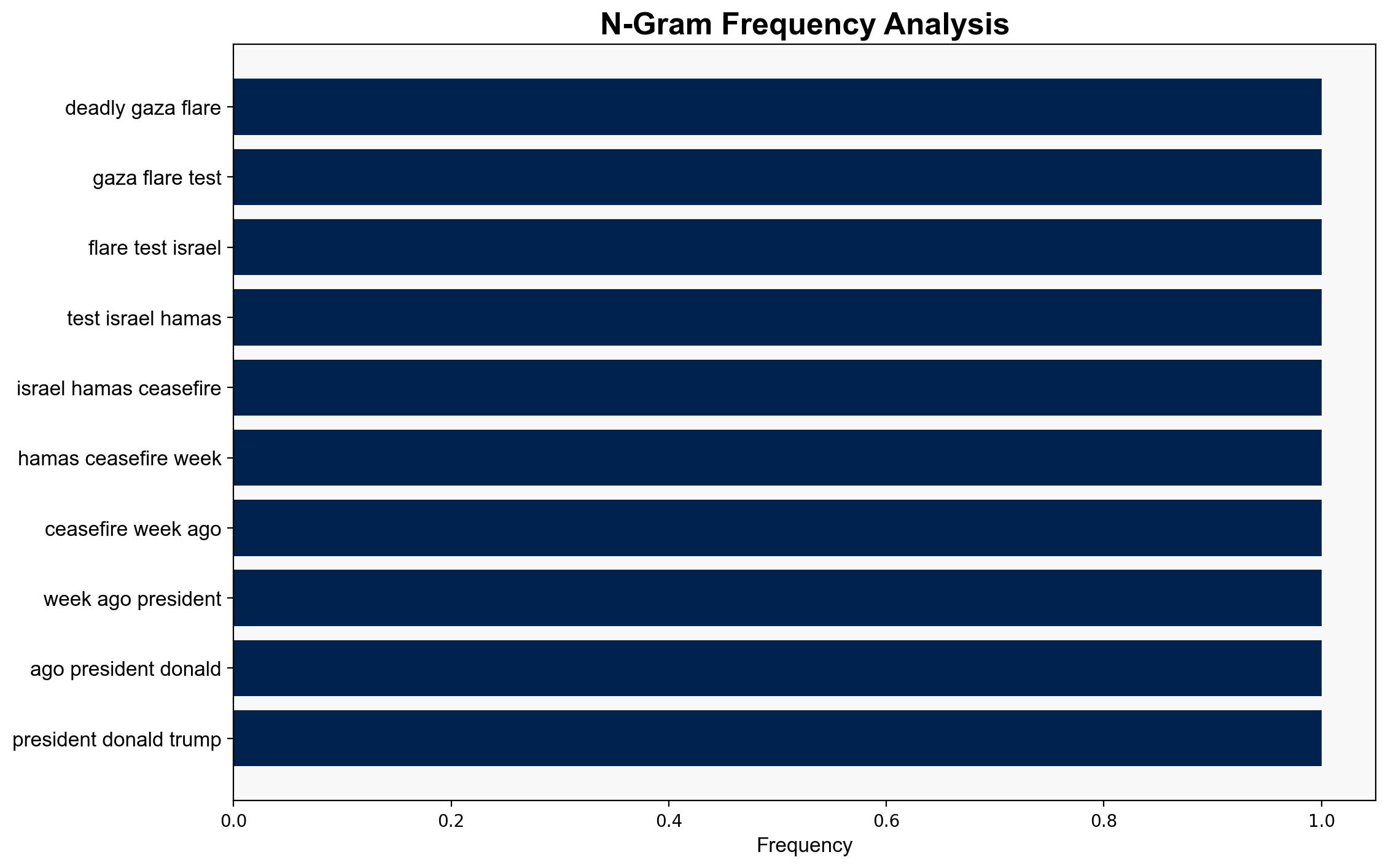Deadly Gaza flare-up tests Israel-Hamas ceasefire – BBC News
Published on: 2025-10-20
Intelligence Report: Deadly Gaza flare-up tests Israel-Hamas ceasefire – BBC News
1. BLUF (Bottom Line Up Front)
The recent escalation in Gaza poses a significant threat to the fragile ceasefire between Israel and Hamas. The most supported hypothesis suggests that internal factions within Hamas are undermining the ceasefire, potentially leading to further conflict. Confidence level: Moderate. Recommended action: Intensify diplomatic engagement with key regional actors to stabilize the situation and prevent further escalation.
2. Competing Hypotheses
1. **Internal Factionalism within Hamas**: The escalation is primarily driven by internal divisions within Hamas, with rogue elements acting independently to disrupt the ceasefire.
2. **Israeli Strategic Calculations**: Israel’s military actions are a calculated effort to weaken Hamas’s military capabilities, testing the limits of the ceasefire to gain strategic advantage.
Using the Analysis of Competing Hypotheses (ACH) 2.0, the first hypothesis is better supported by the evidence of communication breakdowns and rogue actions within Hamas, as well as the involvement of international mediators indicating a lack of unified control within Hamas. The second hypothesis is less supported due to the lack of clear strategic gains for Israel from the escalation.
3. Key Assumptions and Red Flags
– **Assumptions**: It is assumed that Hamas has full control over its factions, which may not be accurate given the reported communication issues.
– **Red Flags**: The vague wording of the ceasefire agreement and the unresolved status of Hamas fighters could lead to further misunderstandings and violations.
– **Blind Spots**: Potential external influences on Hamas factions, such as support from other regional actors, are not fully explored.
4. Implications and Strategic Risks
– **Escalation Risks**: Continued violations could lead to a full-scale conflict, drawing in regional powers and destabilizing the broader Middle East.
– **Geopolitical Dimensions**: The involvement of international mediators highlights the geopolitical stakes, with potential impacts on U.S. foreign policy and regional alliances.
– **Psychological Impact**: The ongoing violence exacerbates tensions and distrust among local populations, hindering long-term peace efforts.
5. Recommendations and Outlook
- Enhance intelligence-sharing with regional allies to monitor and address factional activities within Hamas.
- Facilitate back-channel communications to reinforce the ceasefire and address unresolved issues in the agreement.
- Scenario Projections:
- Best Case: Successful diplomatic interventions lead to a reinforced ceasefire and gradual de-escalation.
- Worst Case: Breakdown of the ceasefire results in a prolonged conflict, destabilizing the region.
- Most Likely: Continued sporadic violence with intermittent diplomatic efforts to maintain a tenuous peace.
6. Key Individuals and Entities
– Donald Trump
– Steve Witkoff
– Jared Kushner
– Benjamin Netanyahu
– Shadi Abu Obeid
7. Thematic Tags
national security threats, counter-terrorism, regional focus, geopolitical stability




